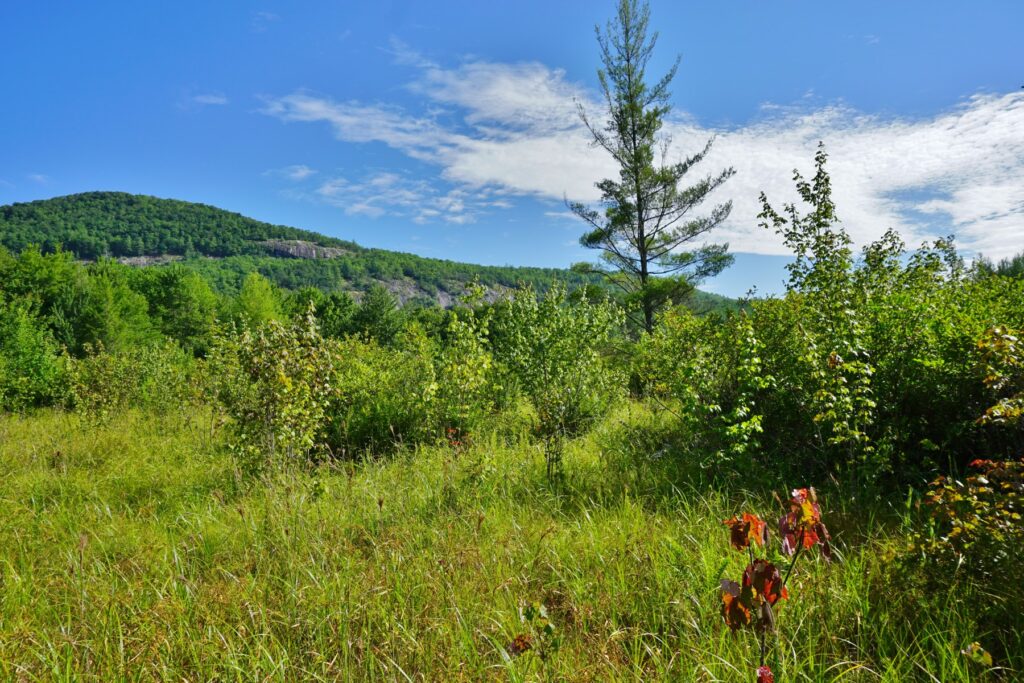By Kristie Gianopulos
A huge reason I love wetlands is because they are FULL of LIFE! If you are near a wetland, no matter what time of year, you are bound to see, hear, and smell evidence of this life, whether it be birds, insects, plants, fish, invertebrates, or mammals. Why are wetlands like this? The answer is WATER.
A new Wetland Plant Guide
A desk and field guide reference to our fabulous array of wetlands throughout the state is available in a recently updated, fully-illustrated and expanded version published by the NC Division of Water Resources.
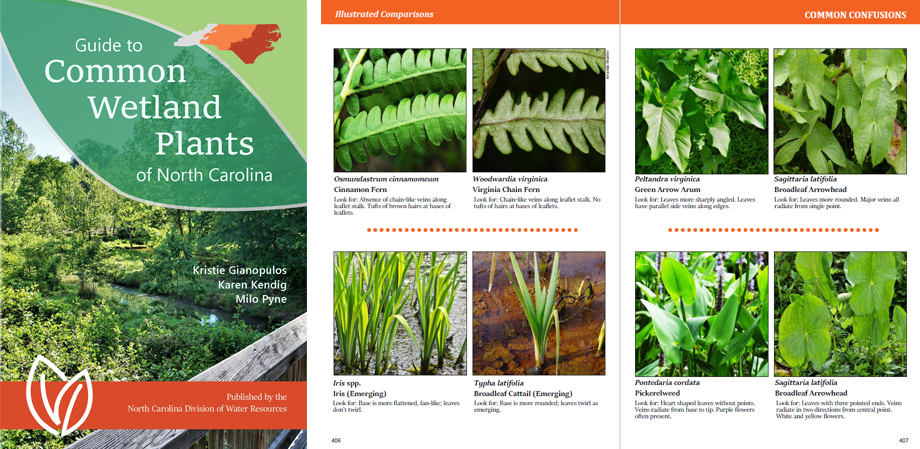
Updated from a 1997 drawing-based guide by Karen Kendig, the 2021 Guide to Common Wetland Plants of North Carolina now includes more than 200 species, multiple photographs of identifying features for every species, range maps, and expanded information about each species, color coded by group. It was produced by Kristie Gianopulos with assistance from Karen Kendig and Milo Pyne.
The new guide can be purchased in print or e-book from Amazon and a free downloadable PDF is also available at www.ncwetlands.org/plantguide. The ncwetlands.org website also has an interactive map of publicly accessible wetlands across the state, as well as educator resources and results of wetlands research done by the NC Division of Water Resources wetland science team.
North Carolina’s wetlands provide an impressive array of benefits and services, including flood and erosion control, water filtration, nursery grounds for fish and shellfish, recreational opportunities, water supply recharge, wildlife and plant habitat, pollinator refuges, and more! This is true for all our wetlands, from small mountain bogs and riverside seepages, to Piedmont floodplains, to coastal marshes. Here is an interactive map and searchable table of public wetlands in North Carolina.
What is a wetland?
A wetland is a place where water collects long enough to change the soil properties and select for certain types of plants that can tolerate wet feet. Of course, sometimes a wetland dries out – then how do you know it’s a wetland?
Look at the soil.
Wetland soils look different; they are more gray or black than non-wetland (upland) soils, which are more reddish or yellowish. This is because saturated, low-oxygen conditions create special environments for microbes to create changes in the soils.
Look at the plants.
These soil conditions select for certain special plants – our wonderful diversity of wetland plants! Special adaptations allow them to withstand and even thrive in saturated soils. These adaptations include enlarged pores to allow more oxygen into woody stems, buttressing of trunks for stability, and extra (“adventitious”) roots or hollow stems to deal with low oxygen levels. Look for these special traits next time you see a wetland!
North Carolina’s fantastic wetland variety
Mountain Bogs Public examples are Graveyard Fields and Cold Prong Pond Overlook Trail on the Blue Ridge Parkway, and Panthertown Valley in the Nantahala National Forest.
Mountain bogs are open wetlands found in relatively flat spaces at the base of slopes, where long-term ground saturation makes an ideal situation for a range of wetland plants, many of them unique non-woody plants. Walking in a bog feels like walking or bouncing on a wet sponge, because bogs support extensive mats of sphagnum moss, which also creates an acidic environment. A few tree species can grow in mountain bogs, like the Red Maple (Acer rubrum) and Tag Alder (Alnus serrulata), but also smaller trees and woody shrubs like the black and silky willows (Salix nigra; Salix sericea), Common Elderberry (Sambucus canadensis), and Swamp Rose (Rosa palustris).
Lots of herbaceous species are found in mountain bogs, including Juncus spp., Scirpus spp., Cinnamon Fern (Osmundastrum cinnamomeum), Common Cattail (Typha latifolia), and sedges like Carex and Cyperus spp. One of my favorites in mountain bogs is the Woodland Bulrush (Scirpus expansus) with its alternating stem bands of red and green.
Mountain bogs tend to be small. The median size of wetlands in the mountains is only one-tenth of an acre. Over 80% of North Carolina’s prehistoric bogs have been altered, so it’s really special to visit one. Because of this, several threatened or endangered species occur in them. Some of my favorites are the carnivorous pitcher plants (Sarracenia spp.) and the Swamp Pink (Helonias bullata).
Riverine Forest Wetlands are statewide. Public examples are Howell Woods Environmental Learning Center in Johnston County, Chowan Swamp Game Land near Edenton, and Kuralt Trail in Roanoke River National Wildlife Refuge north of Williamston.
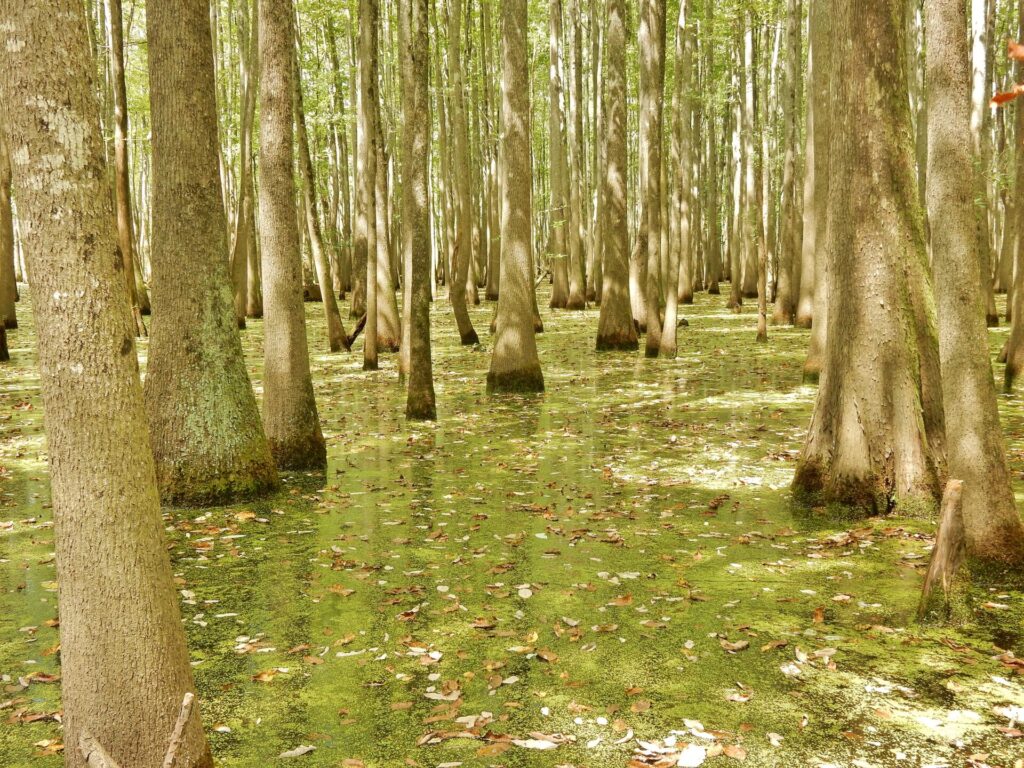
Riverine forest wetlands occur extensively in North Carolina, other southern states, and around the world. They occur throughout North Carolina along the floodplains of rivers, receiving much of their water from floods, but they also receive water from rain, surface runoff, and/or groundwater near the surface. Fluctuating water levels are a hallmark feature in this type of wetland.
A variety of water-tolerant trees constitutes most of the plant cover, but some shrubs and non-woody plants are found in these wetlands. In the Piedmont and Coastal Plain, some common tree species found in riverine forest wetlands include Bald Cypress (Taxodium distichum), Swamp Tupelo (Nyssa biflora), Water Tupelo (Nyssa aquatica), American Elm (Ulmus americana), and Cherrybark Oak (Quercus pagoda). You’ll notice that these trees show buttressing at the bases of their trunks, which helps them stay upright in wet or unstable soils. Of course, other species of trees commonly occur in these places too – the Swamp Chestnut Oak (Quercus michauxii), Ironwood (Carpinus caroliniana), Green Ash (Fraxinus pennsylvanica), Tulip-tree (Liriodendron tulipifera), and Red Maple.
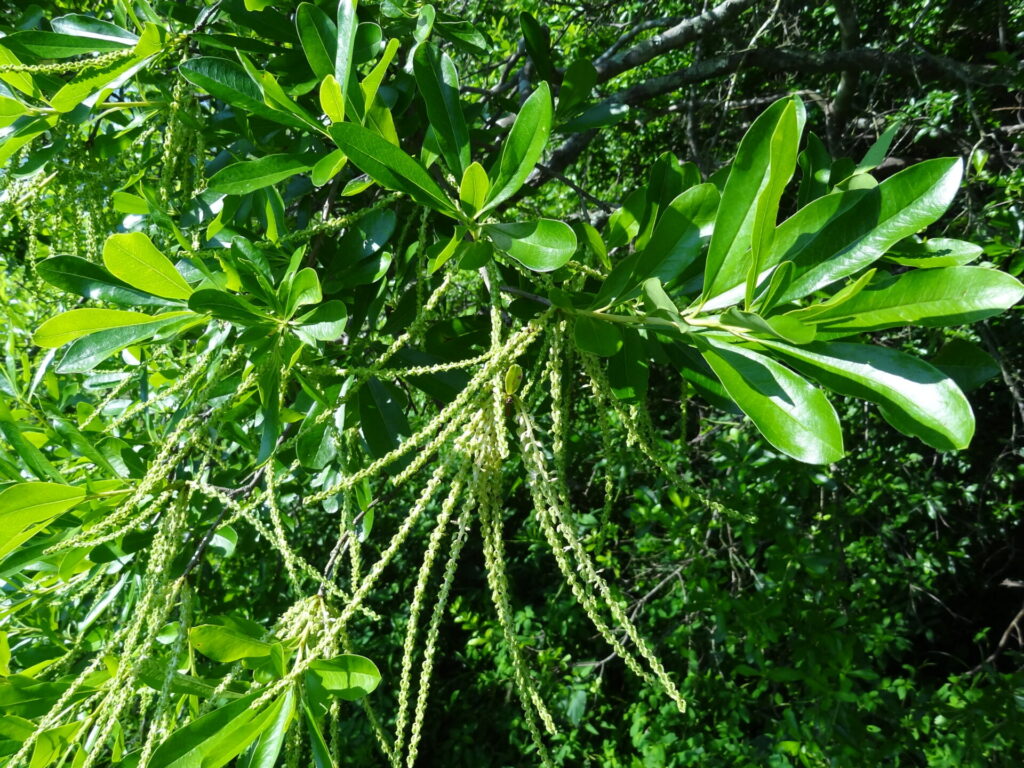
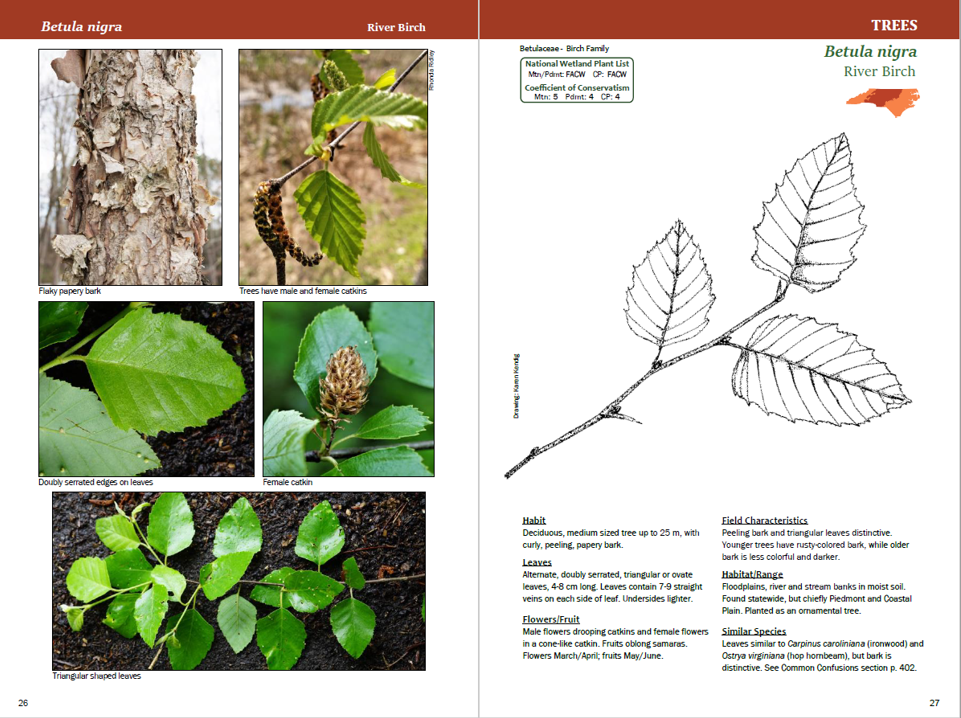
A whole set of shrubs with white flowers grow in riverine swamps – Virginia Sweetspire (Itea virginica), Swamp Titi (Cyrilla racemiflora), and Coastal Sweet-pepperbush (Clethra alnifolia). In mountain riverine forests, you’ll see more American Sycamore (Platanus occidentalis) and more River Birch (Betula nigra), but also Red Maple, and alder.
As for non-woody species, jewelweed (Impatiens spp.) is commonly found here often growing alongside Poison Ivy (Toxicodendron radicans), which is also very common in these wetlands. Lizard’s-tail (Saururus cernuus) is also very common in these wet woods. Giant Cane (Arundinaria gigantea) will grow en masse here, as it mainly reproduces by rhizomes. But if you ever see it in seed, consider yourself fortunate, because it reproduces this way only once about every 40-50 years, when it dies. And of course, these forested wetlands have lots of ferns: Cinnamon Fern, Sensitive Fern (Onoclea sensibilis), Royal Fern (Osmunda spectabilis), Netted Chain Fern (Lorinseria areolata), and Virginia Chain Fern (Anchistea virginica).
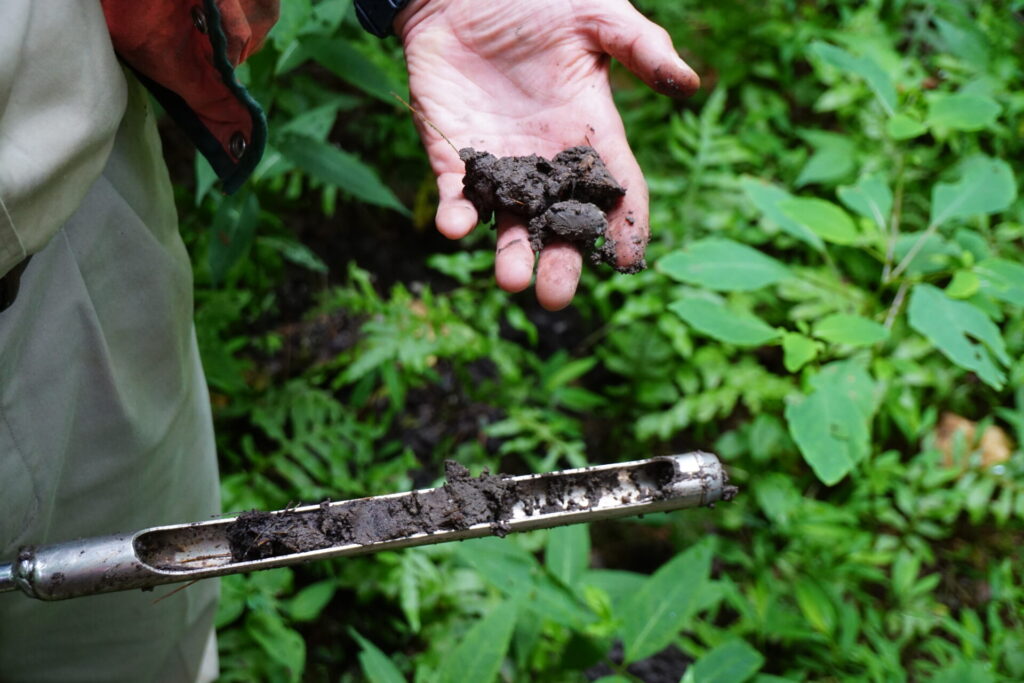
Seep Wetlands are statewide. Public examples are Battle Park in Rocky Mount, Calloway Forest Preserve in the Sandhills near Raeford, and Kellogg Center area at University of North Carolina, Asheville.
Seep wetlands are so named because the groundwater “seeps” to the surface. They are typically located along slopes leading down to floodplains and are characterized by the presence of slow-moving groundwater that cannot permeate underlying clay or bedrock. The vegetation can range from small non-woody plants to large hardwood trees. Possumhaw Viburnum (Viburnum nudum) is very common in seep wetlands. Jack-in-the-pulpit (Arisaema triphyllum) is almost always in these wetlands too, along with shade-tolerant Carex species, like Carex atlantica and Carex crinita. Other common species in Piedmont seeps include Giant Cane, Cinnamon Fern, Ironwood, and Red Maple.
Freshwater Marshes are statewide. Public examples are Wesley’s Park in Franklin, Richardson Taylor Preserve in northeast Greensboro, Turnipseed Nature Preserve in eastern Wake County, and the Croatan National Forest on the coast south of New Bern.
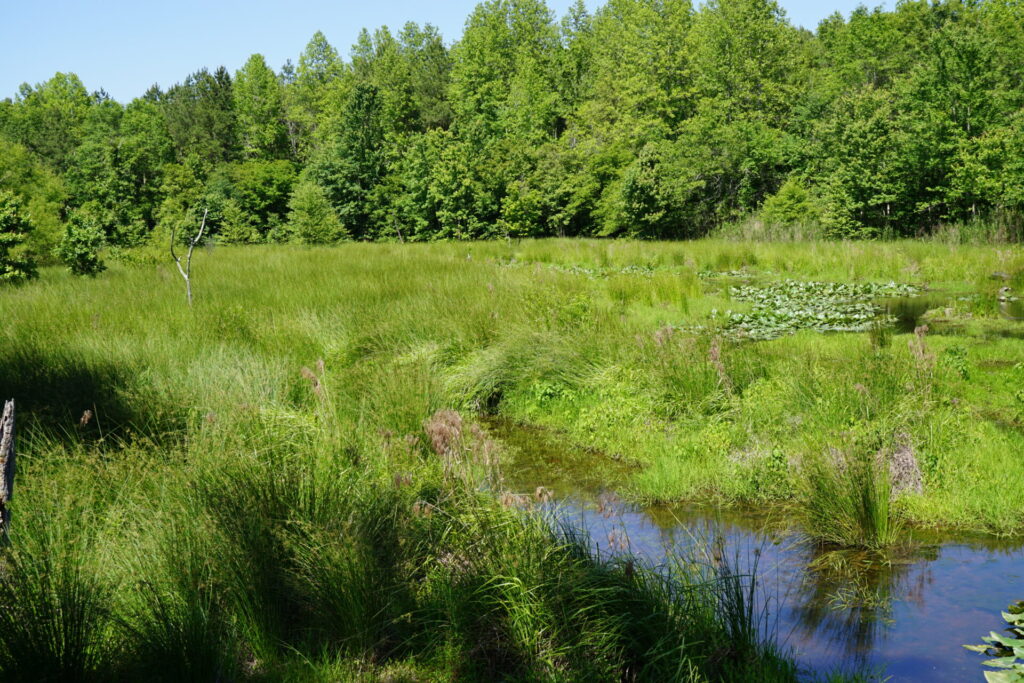
Freshwater marshes can be found in a wide variety of wet landscape contexts including along rivers, canals and estuaries, along lakes or ponds, or in wet meadows where groundwater is close to the surface. Marshes generally do not have trees. They have a wide variety of non-woody plants like cattail, rushes, sedges, and soft-tissued flowering plants with broad leaves.
These freshwater marshes are filled with sun-loving species of Carex and Cyperus; they usually have triangular flowering stems (in cross section). The sun-loving Carex species like Carex lurida are usually in shallower water or moist edges, whereas Cyperus (flatsedges) usually can grow in standing water. Rushes are also common in freshwater marshes, including Soft Rush (Juncus effusus) and beakrushes (Rhynchospora spp.), which are named for their elongated spikelets shaped like long beaks.
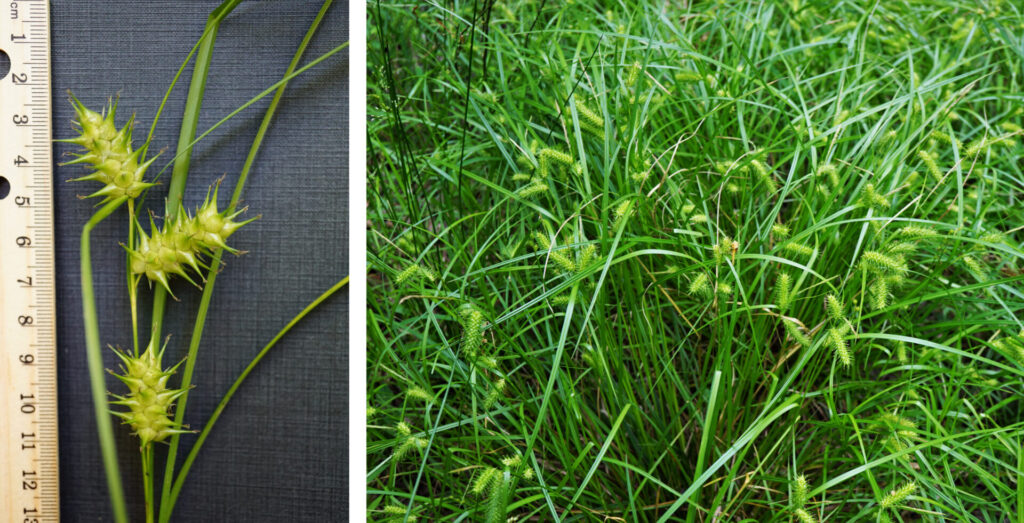
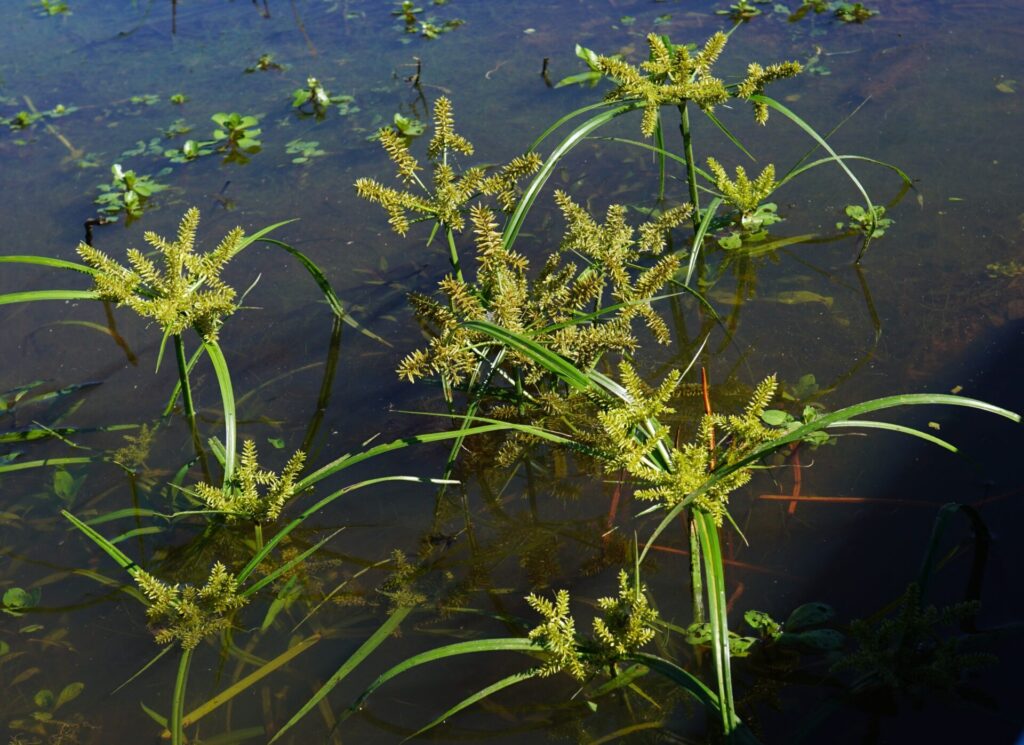
In shallow water, you’ll find other herbaceous species like Green Arrow-arum (Peltandra virginica), with its arrowhead shaped leaves, Pickerelweed (Pontederia cordata) with its purple flowers and heart-shaped leaves, and American Bur-reed (Sparganium americanum) with its fun spiky ball-shaped fruits and rounded leaf tips. The occasional woody shrub might be the unique Buttonbush (Cephalanthus occidentalis), Common Wax-myrtle (Morella cerifera), or the Swamp Rose-mallow (Hibiscus moscheutos) with its beautiful showy flowers.
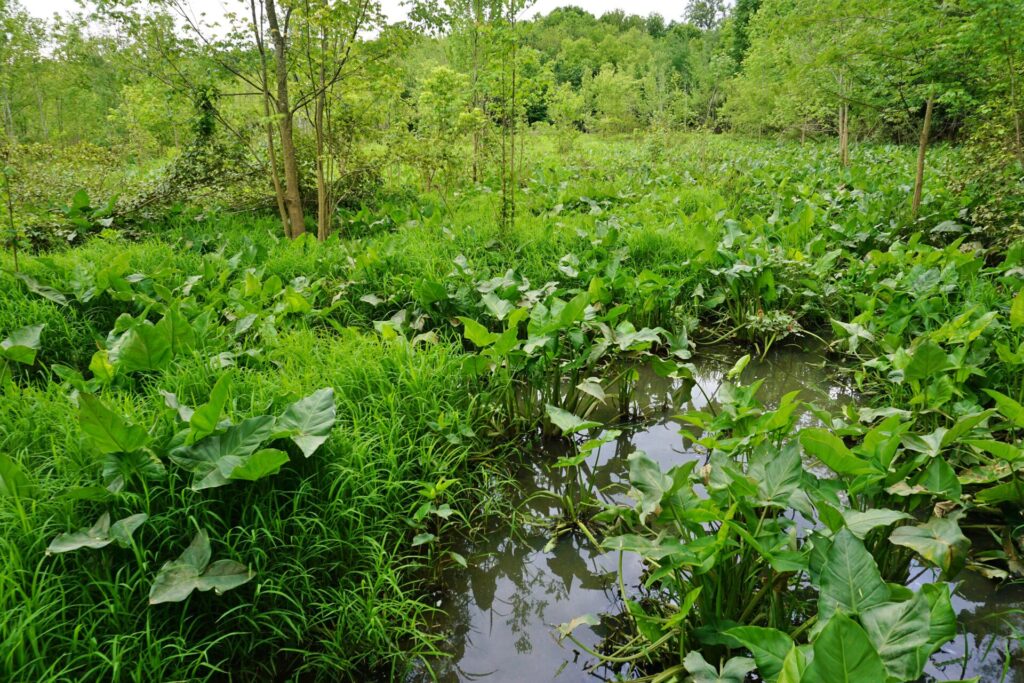
Pocosins are coastal. Public examples are Pocosin Lakes National Wildlife Refuge located in the state’s Inner Banks on the Albemarle-Pamlico Peninsula, Angola Bay Game Lands in Wallace, and the Croatan National Forest on the coast. The Croatan National Forest has pine forests, saltwater estuaries, freshwater marshes, limesink wetlands, and raised evergreen-shrub swamps (pocosins).
Pocosins are a wetland type unique to the southeastern portion of the Atlantic Coastal Plain, with the majority of them occurring in North Carolina. Evergreen shrubs grow densely in pocosins, which makes them very difficult to get through. Pocosins can be a very demanding place for plants to grow. The water is quite acidic, low in nutrients, and only replenished by precipitation. Pocosins tend to be dominated by unique evergreen-leaved shrub species like Gallberry (Ilex coriacea), Shining Fetterbush (Lyonia lucida), and Inkberry (Ilex glabra). You’ll find lots of the sturdy Laurel Greenbrier (Smilax laurifolia) crawling over everything, too.
Very few kinds of trees can survive in a true pocosin, one of them being the gnarly Pond Pine (Pinus serotina). Several species of bay tree live in pocosins – Sweetbay (Magnolia virginiana), Loblolly Bay (Gordonia lasianthus), and Swamp Bay (Persea borbonia).
Pine Wetlands are coastal. A public example is the Green Swamp Nature Preserve near Wilmington.
Pine wetlands (pine flats or pine savannas) are found in sandy soils of Coastal Plain states including North Carolina. Water table levels here stay close enough to ground surface to foster a variety of water-tolerant plants, including Longleaf Pine (Pinus palustris) and Pond Pine trees, wetland shrubs such as Southern Bayberry (Morella caroliniensis) and Inkberry, and herbs like three-awn grasses (Aristida spp.) and beakrushes.
Salt and Brackish Marshes are coastal. Public examples are Lawson Creek Park in New Bern (brackish), Carolina Beach State Park (salt) south of Wilmington, and Cedar Point Tidelands Trail (salt).
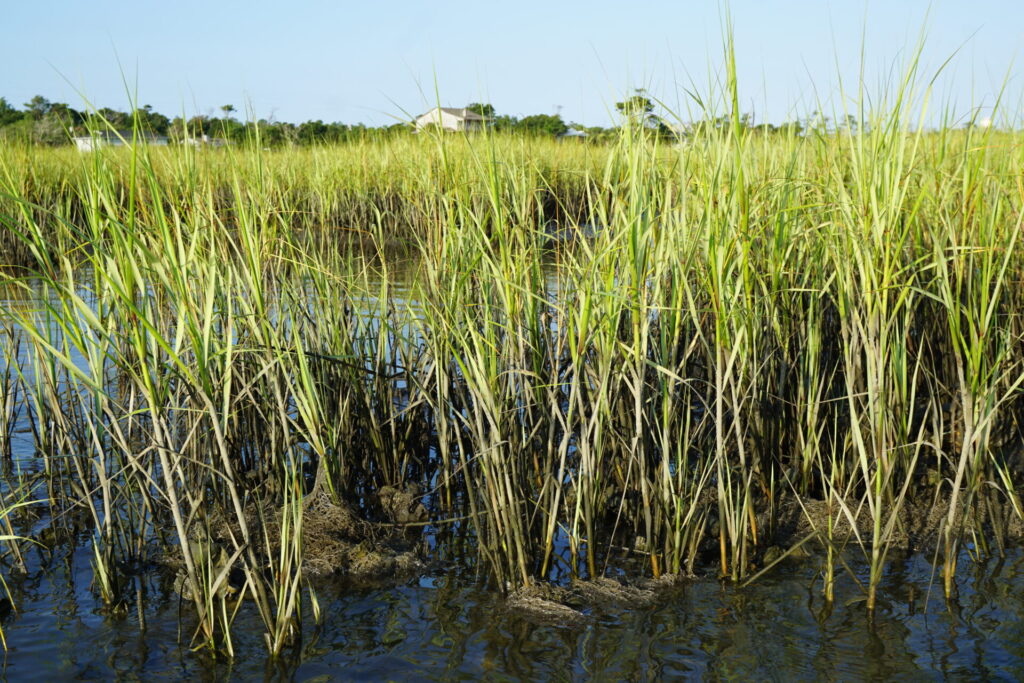
Salt marshes are found where ocean tides provide regular flooding with saltwater; they are dominated by Smooth Cordgrass (Spartina alterniflora) but interspersed you can find the beautiful Sea-oxeye Daisy (Borrichia frutescens) and Carolina Sea-lavender (Limonium carolinianum). Saltmeadow Cordgrass (Spartina patens) is also common in salt marshes.
If a marsh receives a mixture of freshwater and saltwater, it will be brackish. There you will find Sawgrass (Cladium mariscoides), Big Cordgrass (Spartina cynosuroides), Black Needlerush (Juncus roemarianus), and Atlantic White Cedar (Chamaecryparis thyoides), all of which are brackish tolerant species.
Estuarine Woody Wetlands are coastal. A public example is Fort Macon State Park in Swanquarter National Wildlife Refuge on Pamlico Sound.
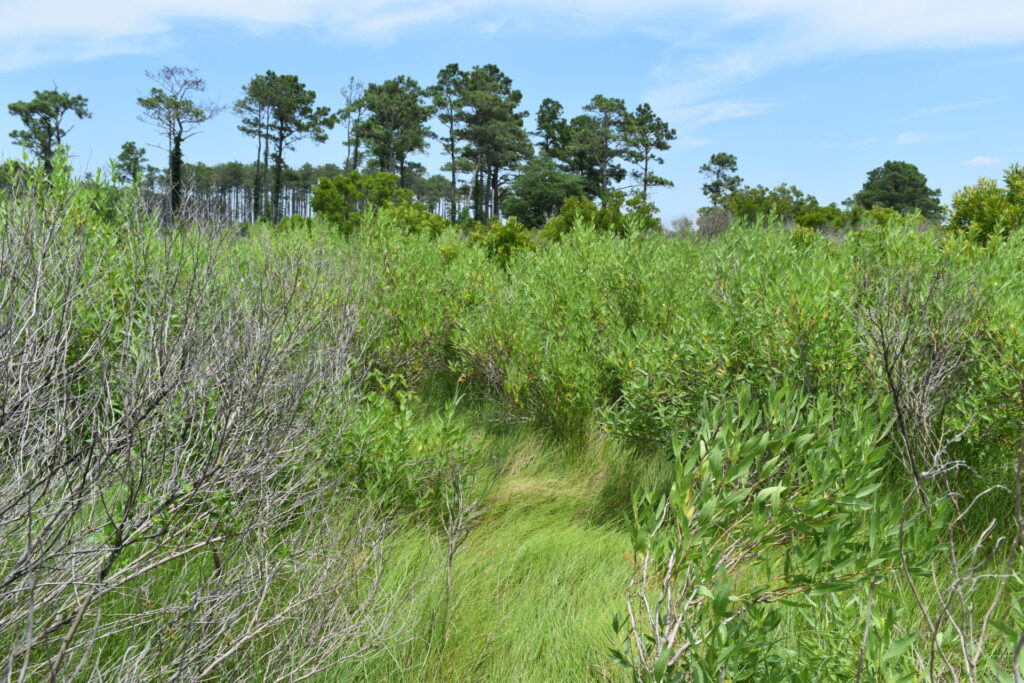
Estuarine woody wetlands are found at the edges of brackish estuaries or salt marshes. Their water levels are a bit unpredictable, affected by wind tides and occasional flooding from salt or brackish water. The plant life here is primarily woody vegetation like trees and large shrubs that can adapt to changing water levels as well as the chemical influences from saltwater. Woody plants found in these wetlands are the Atlantic White Cedar, Maritime Marsh-elder (Iva frutescens), and Eastern Baccharis (Baccharis halimifolia), along with some wax-myrtle. Groundcover is often Saltmeadow Cordgrass and Saltgrass (Distichlis spicata).
Future plans for the Wetland Plant Guide
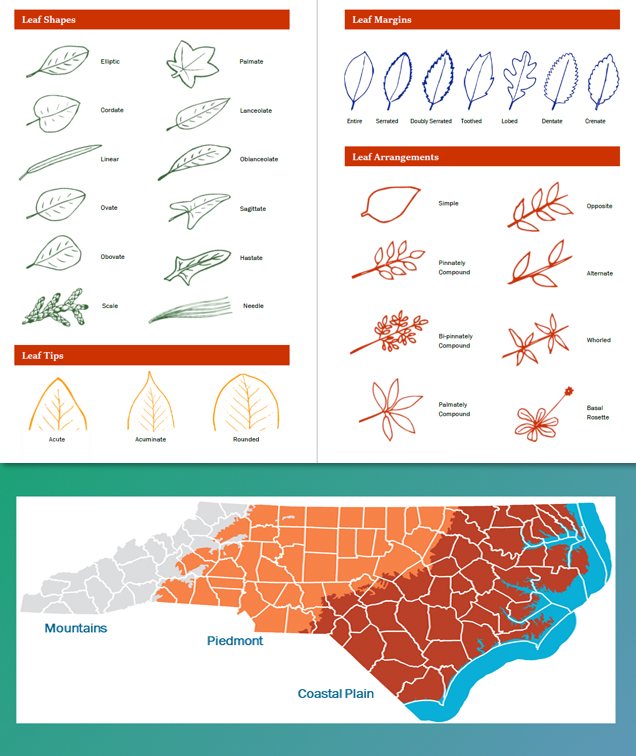
The NC Division of Water Resources recently won an E.P.A. grant to create a free North Carolina wetland plant app from the guidebook, as well as an interactive online wetland plant identification guide. These will be several years in development, but we are excited to announce they will be available in the future.
By Kristie Gianopulos
Native Plant News – Summer 2023

Kristie Gianopulos is a wetland scientist with the NC Division of Water Resources, Water Sciences Section. She has been part of a small wetland science team for the past 11 years, participating in or leading various E.P.A. grant-funded wetland projects across the state. Prior to working in North Carolina, she worked in wetland and endangered species consulting for a dozen years in Florida where she obtained her Master’s Degree in herpetology. Kristie enjoys combining her love for visual design, photography, and ecology in her work.
